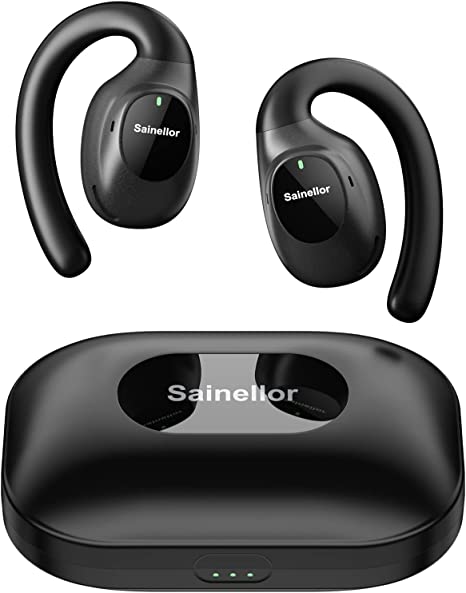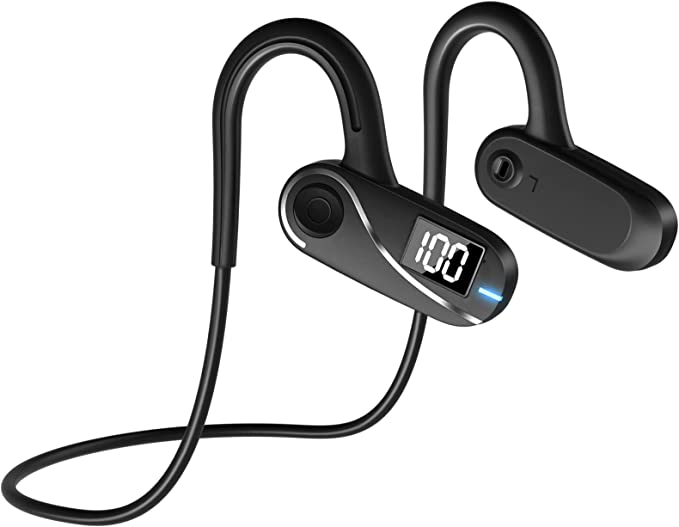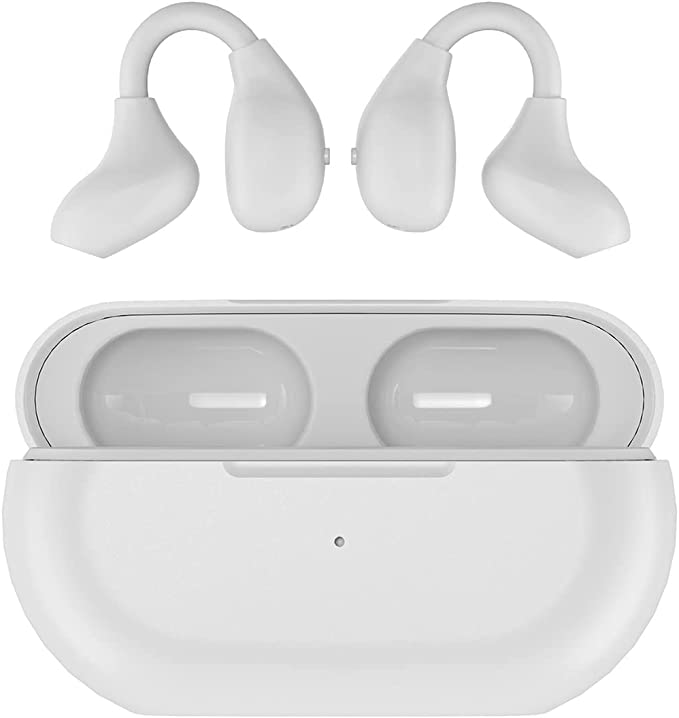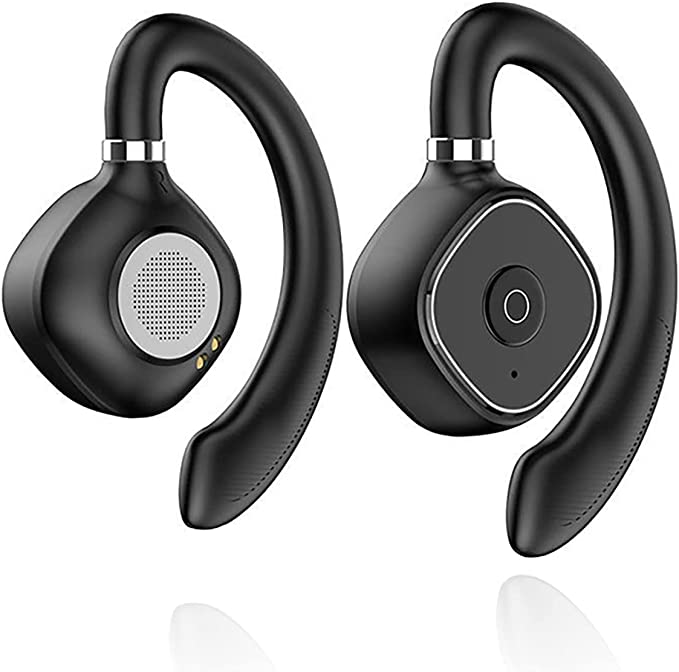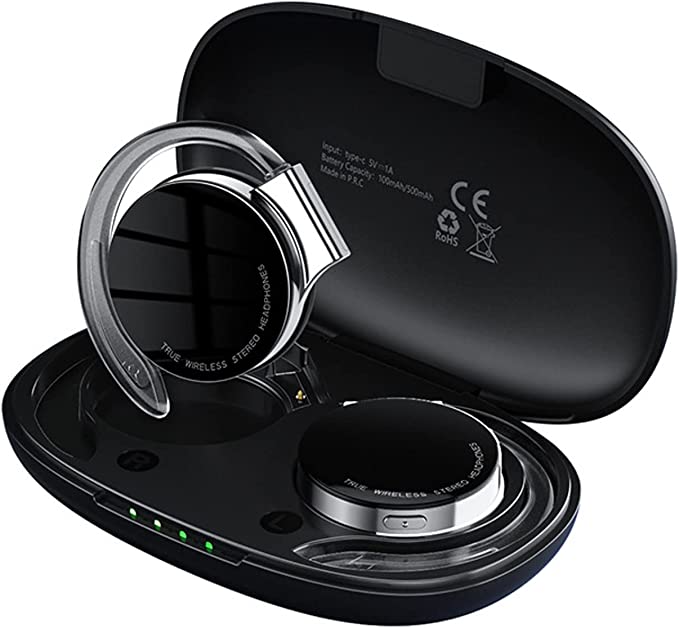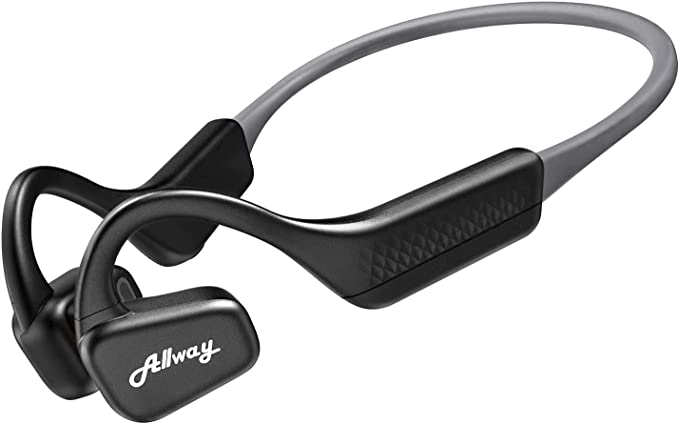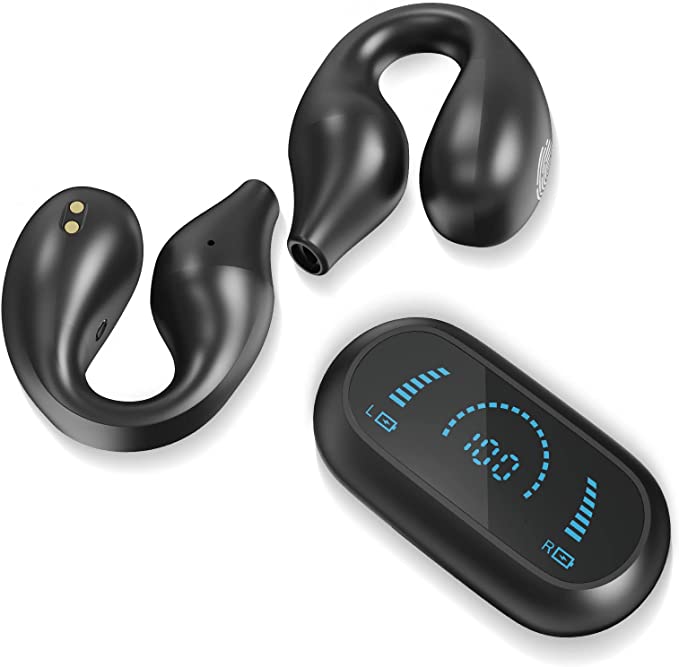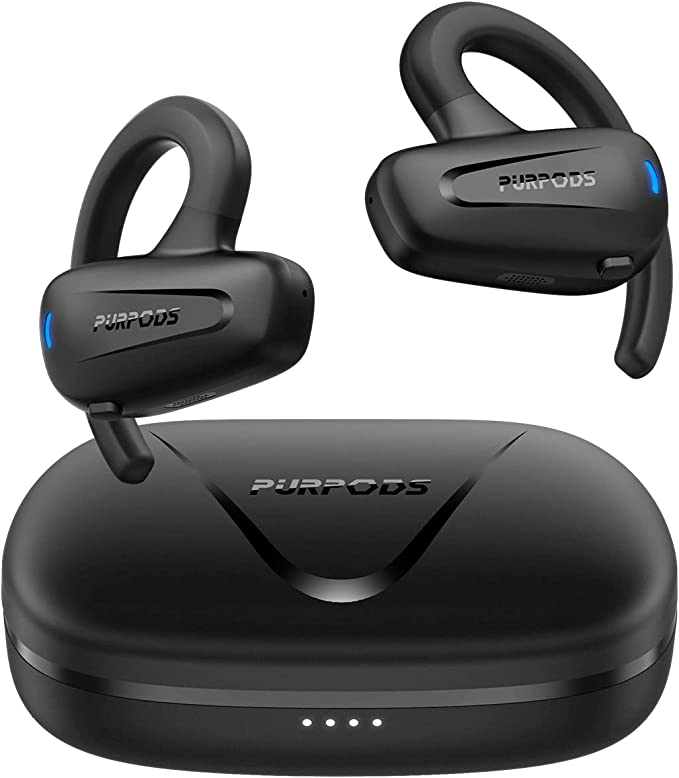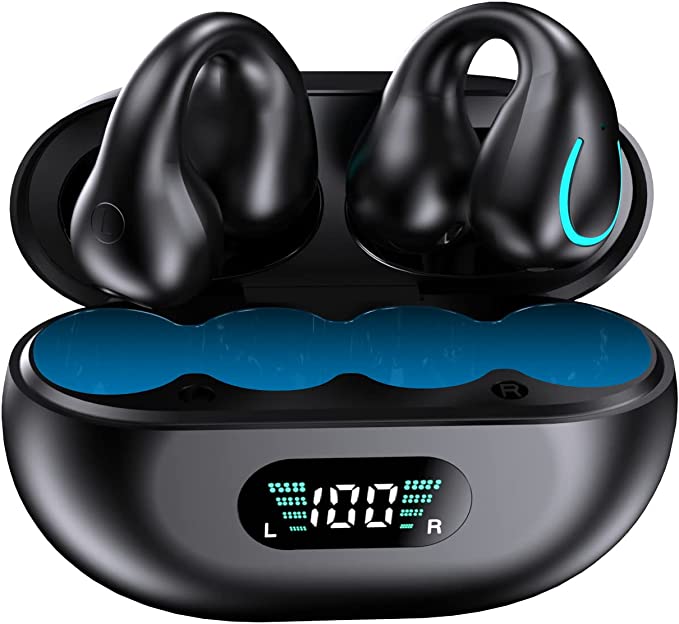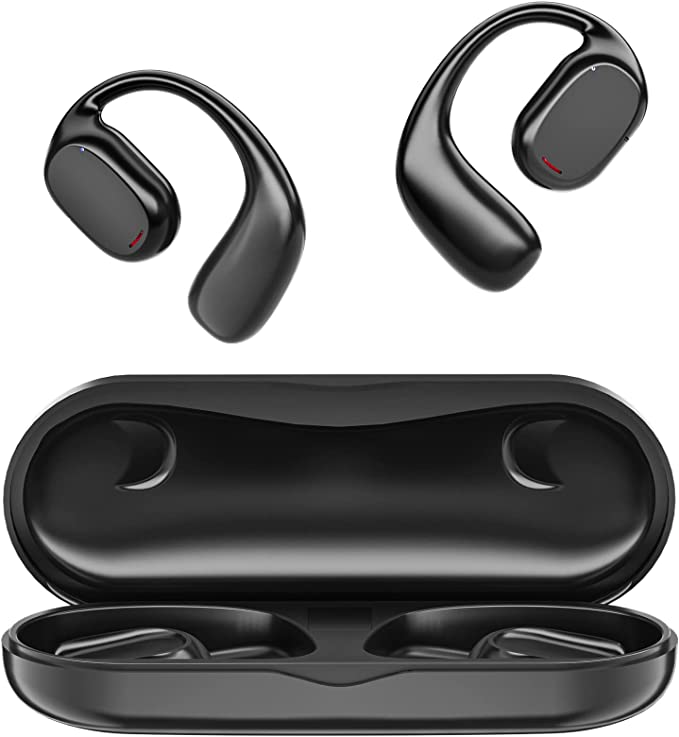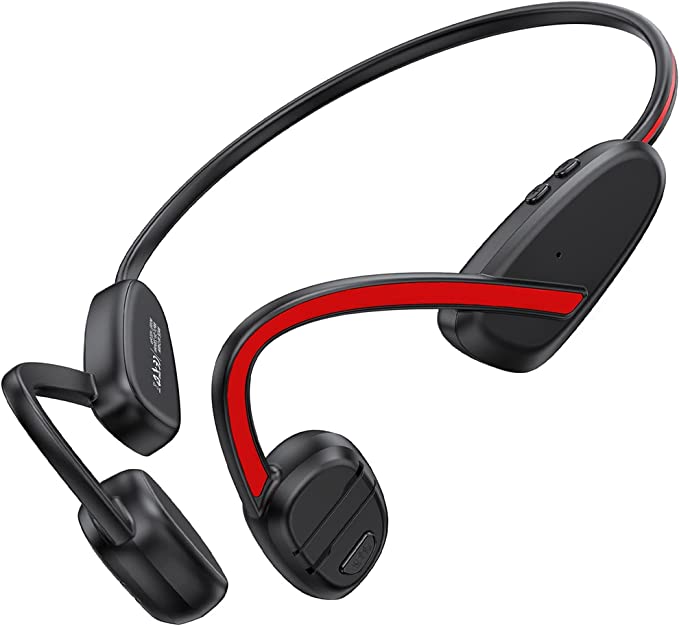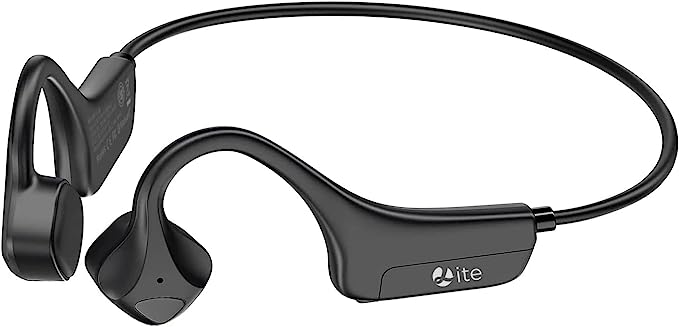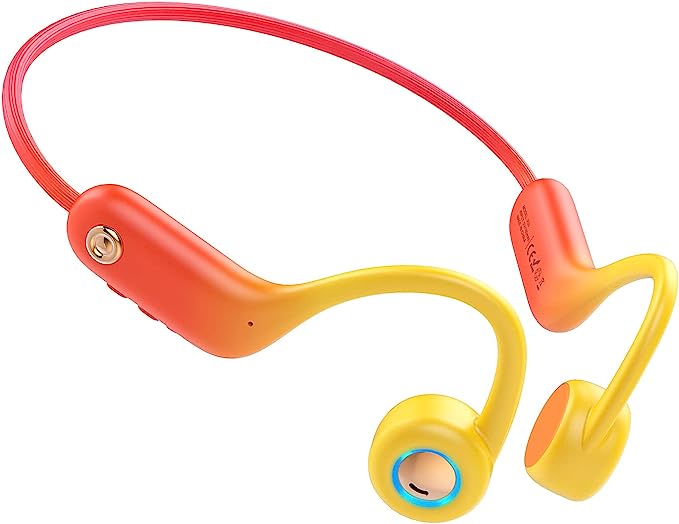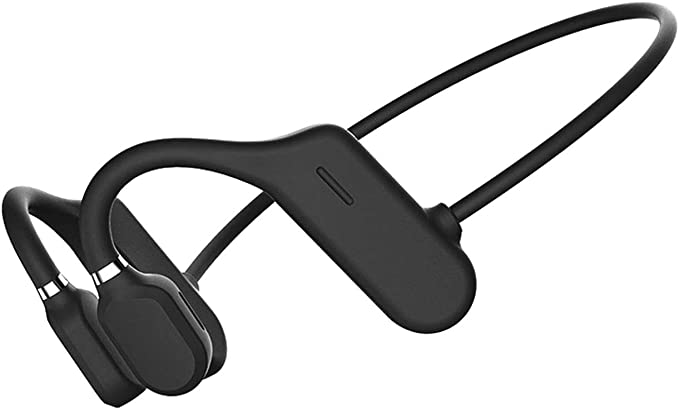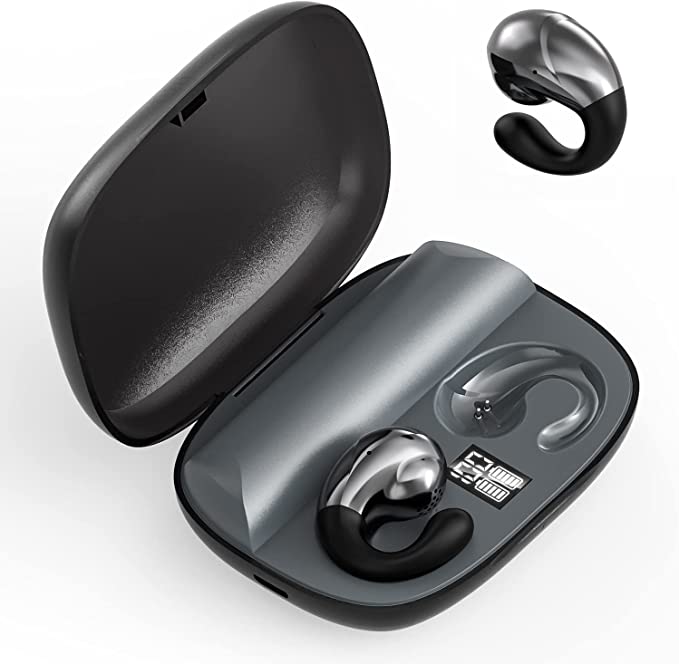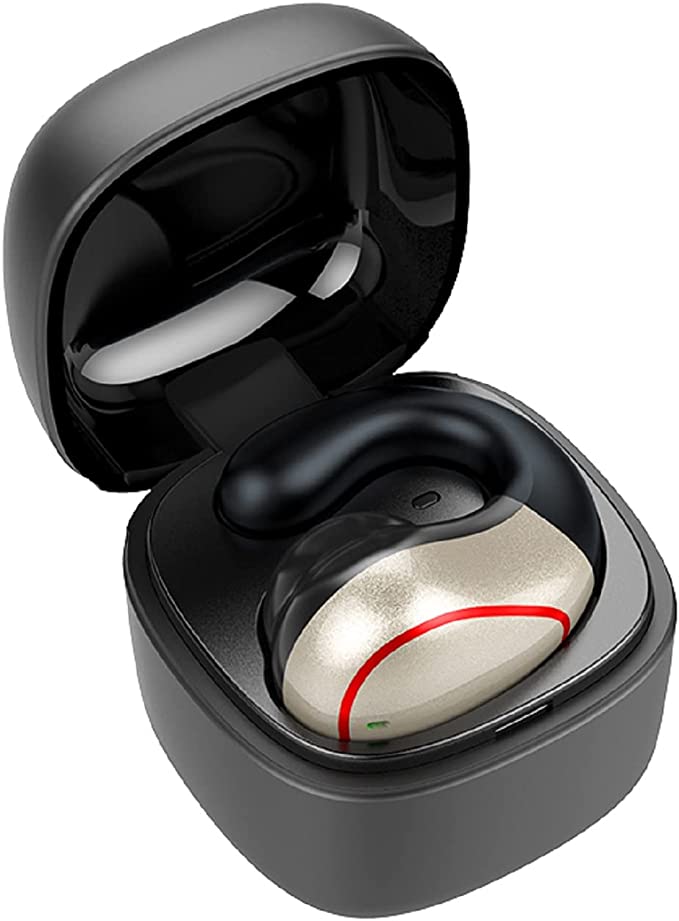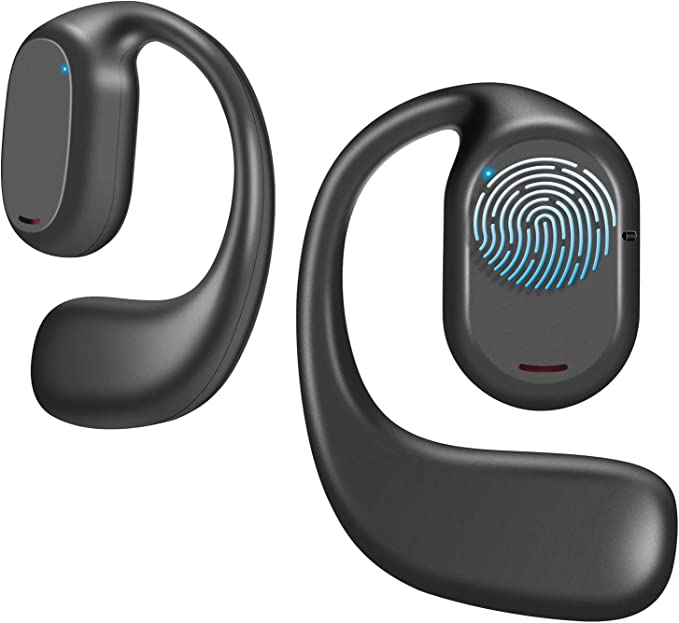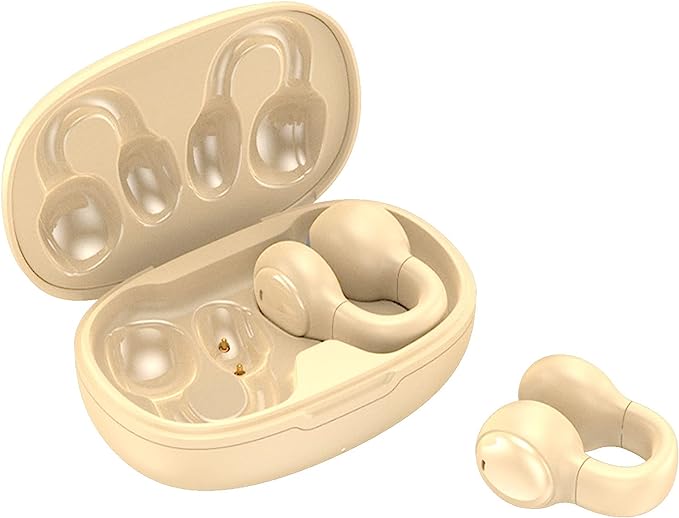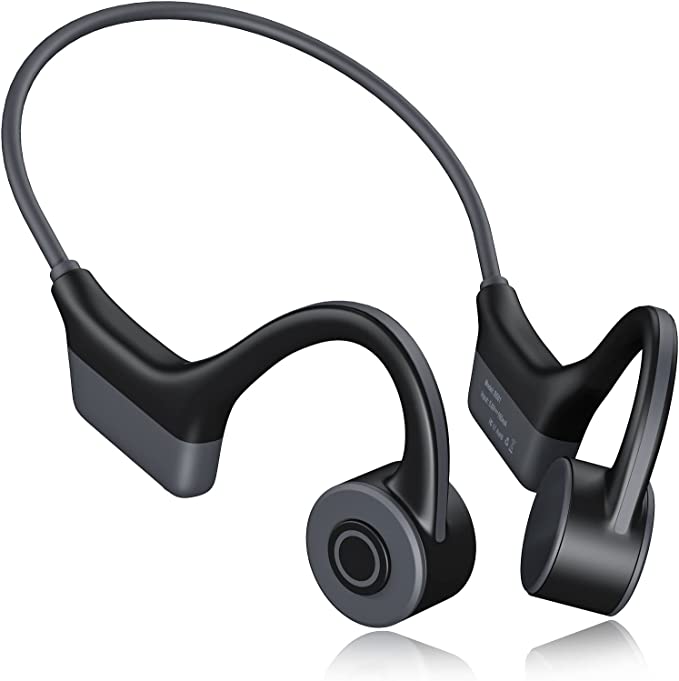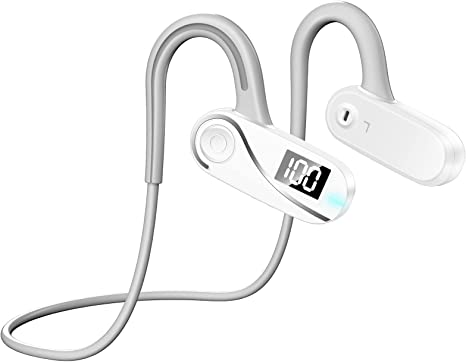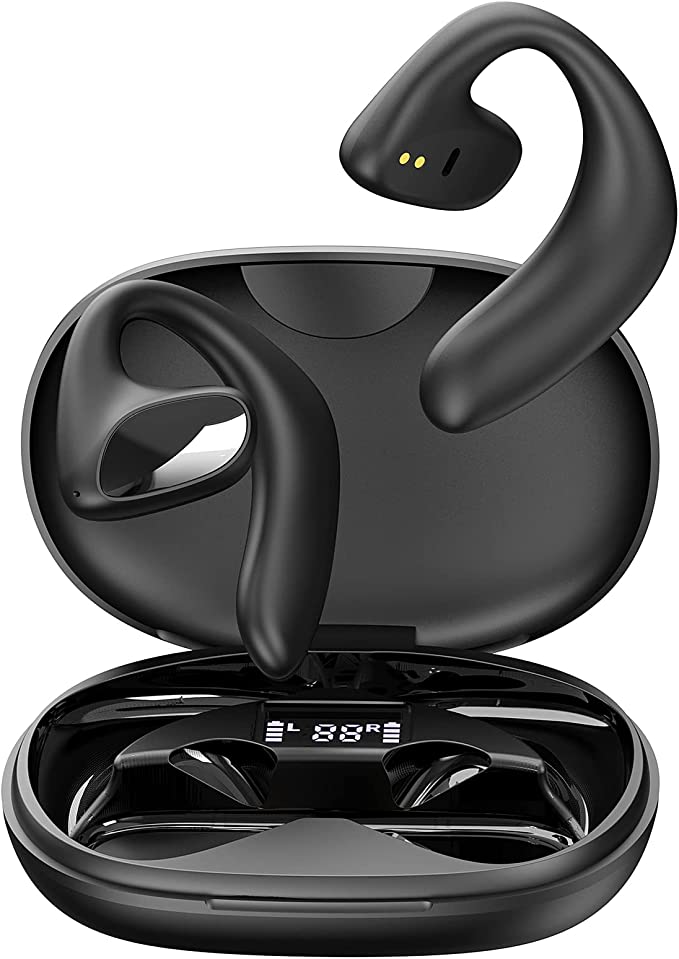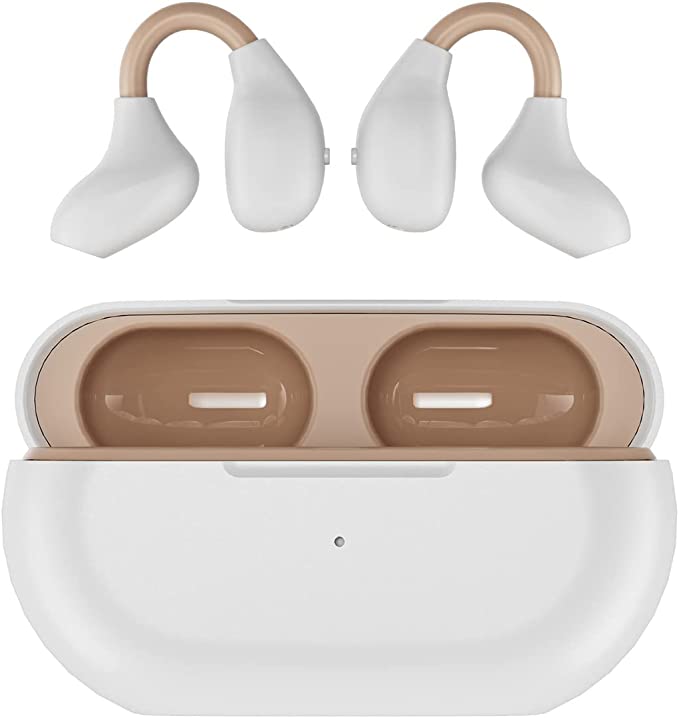ESSONIO LJY T20 Open Ear Headphones: The Science of Sound, Awareness, and All-Day Comfort
Update on May 29, 2025, 8:37 a.m.
We live in a world saturated with sound, a symphony of a million distractions and a personal soundtrack for every mood. For many of us, headphones are the gateway to focus, to motivation, to a momentary escape. Yet, cocooning ourselves in a private audio bubble often means a disconnect from the very environment we need to navigate, interact with, and sometimes, simply appreciate. This is the listener’s dilemma: how do we stay immersed in our chosen soundscape without becoming oblivious to the subtle (or critical) cues of the world around us? The rise of open-ear audio technology offers a compelling answer, and the ESSONIO LJY T20 Open Ear Headphones serve as our fascinating subject to explore the science, design, and human experience woven into this evolving way of listening.

Breathing Room for Your Ears: The Gentle Embrace of Open-Ear Design
The first thing you might notice about headphones like the ESSONIO LJY T20 is what they don’t do. They don’t plug deep into your ear canals like traditional earbuds, nor do they create a sealed chamber over your entire ear like bulky over-ear cans. This “open-ear” philosophy is fundamental to their appeal, aiming to provide an experience that feels less invasive and more integrated with your natural hearing.
At the heart of this is the principle of air conduction. This is, quite simply, how we’ve always heard. Sound waves, which are essentially vibrations traveling through the air, are naturally funneled by the structure of our outer ear (the pinna) into the ear canal, where they cause the eardrum to vibrate. These vibrations are then transmitted through the tiny bones of the middle ear to the cochlea in the inner ear, where they are converted into electrical signals our brain interprets as sound. The ESSONIO LJY T20 headphones work by positioning small speakers near, but not in or completely over, the ear canal. These speakers generate sound waves that travel that short, open-air distance to your eardrum, mimicking the natural auditory process. The product information mentions sound being transmitted “through vibration,” which in this context likely refers to the speaker diaphragms vibrating to create these sound waves, rather than direct bone conduction (a different technology that bypasses the eardrum by sending vibrations through the skull).
This design choice has profound implications for comfort. Many users find that prolonged use of in-ear buds can lead to pressure, irritation, or a ‘clogged’ sensation. The ESSONIO LJY T20, by leaving the ear canal unobstructed, sidesteps these issues. This is where ergonomics – the science of designing products to fit the human body optimally and safely – plays a crucial role. The “around ear” form factor aims to distribute weight and pressure points gently. Complementing this is the use of skin-friendly materials, with the product description specifically mentioning silicone. Medical-grade or high-quality silicone is often chosen for wearable devices due to its biocompatibility (low chance of causing allergic reactions), flexibility, and soft texture, contributing to what ESSONIO describes as “painless wearing.” Imagine a marathon video conference: with these, the focus remains on the meeting, not on an increasing urge to liberate your ears. This resonates with user feedback, such as that from Karen 24, who found them a “great solution” for sensitive ears that were always irritated by regular earbuds, noting they are “so light and comfy that I forget they’re on!“

Hearing the World and Your Music: The Delicate Dance of Awareness and Audio
Perhaps the most compelling scientific and practical benefit of an open-ear design like that found in the ESSONIO LJY T20 is enhanced situational awareness. Because your ear canals aren’t sealed, sound waves from your surroundings – the approaching hum of an electric car, the chatter of colleagues in an open-plan office, the chirping of birds on a morning jog – can reach your eardrums unimpeded, alongside the audio being delivered by the headphones. From a physics standpoint, sound waves from multiple sources can coexist and travel through the same air medium. Your brain is then remarkably adept at processing these concurrent auditory streams, allowing you to differentiate and prioritize sounds.
This isn’t just a convenience; it’s often a critical safety feature. For urban commuters, cyclists, or runners like Zoey, who called them her “best running buddy,” being able to hear traffic, pedestrians, or other potential hazards while still enjoying music or a podcast can be a lifesaver. It’s the difference between a near-miss and a safe passage. Beyond overt safety, it facilitates a more seamless interaction with your environment. You can listen for a flight announcement at the airport, hear your name called across the room, or engage in a quick conversation without the awkward ritual of yanking out an earbud. It’s about staying connected, not just digitally, but physically and socially.
Now, the audiophile in you might ask: what about sound quality? Specifically, the “Hi-Fi” (High-Fidelity) claim made by ESSONIO – “clear treble, the midrange is deep, and the bass is deep.” This is where open-ear designs face their most significant acoustic challenges. A sealed ear canal, as provided by in-ear monitors or closed-back over-ear headphones, helps to build up bass frequencies and isolate the listener from external noise, which can contribute to a perception of richness and detail. Open designs, by their very nature, allow some sound to escape (sound leakage) and don’t inherently trap those low frequencies as effectively.
Achieving a truly satisfying bass response and an immersive soundstage in an open format requires clever acoustic engineering. This might involve precisely tuned drivers (the tiny speakers), specific shaping of the earbud housing to direct sound waves more efficiently towards the ear canal, and potentially the use of Digital Signal Processing (DSP) to electronically compensate for the open acoustics. While the ESSONIO LJY T20 product description doesn’t delve into these specific engineering details, the claim of Hi-Fi sound suggests an attempt to address these challenges. User experiences, as always, can be varied here. JC, for example, reported “excellent sound quality.” However, Itpro74’s stark comment, “The sound quality is not good at all,” highlights that perception of audio quality is subjective and can also be highly dependent on the listening environment (a quiet room vs. a noisy street will yield very different experiences with open-ear headphones) and the listener’s personal preferences and prior experiences. The open design itself means that the final sound you perceive is always a blend of the headphone’s output and your ambient surroundings, a unique characteristic of this listening style.

Weathering the Elements, Connecting with Ease: The Pillars of Durability and Digital Handshake
An active lifestyle, or even just the daily grind of commuting, demands a certain resilience from our personal tech. The ESSONIO LJY T20 headphones come equipped with features designed to withstand some of life’s little (and not-so-little) assaults, and to maintain a robust connection to your audio source.
Let’s decode that IP55 rating. “IP” stands for Ingress Protection, an international standard (IEC 60529, to be precise) that classifies the degree of protection provided by the enclosures of electrical equipment against the intrusion of solid foreign objects (like dust and fingers) and liquids. The two digits following “IP” each have a specific meaning:
- The first ‘5’ pertains to solids protection. It signifies that the enclosure is “dust protected.” While not entirely dust-tight (which would be a ‘6’), it means that the ingress of dust is not entirely prevented, but it must not enter in sufficient quantity to interfere with the satisfactory operation of the equipment or impair safety. For everyday use, this means good resistance against pocket lint and general grime.
- The second ‘5’ indicates liquids protection. This is where it gets interesting for active users. A ‘5’ here means the equipment is protected against “water jets.” Specifically, the test involves water projected by a nozzle (6.3 mm in diameter) against the enclosure from any direction, under specified conditions (like flow rate and duration), having no harmful effects. In practical terms, this translates to excellent resistance against sweat during even the most intense workouts and the ability to shrug off a sudden rain shower. You can focus on your run or your reps, not on babying your headphones.
This level of protection provides peace of mind, whether you’re a CrossFit enthusiast dripping sweat, as the product description imagery suggests, or simply caught in an unexpected downpour during your commute.
Equally crucial for a wireless experience is the “digital handshake” – the Bluetooth connection. The ESSONIO LJY T20 specifies the use of a CSR Bluetooth 5.0 chip. Bluetooth, as we know, is the ubiquitous short-range wireless technology that allows our devices to communicate. Version 5.0 brought several significant enhancements over its predecessors (like Bluetooth 4.x versions):
- Increased Range: Bluetooth 5.0 can theoretically offer up to four times the operational range. While walls and interference will always play a part, this generally means you have more freedom to move away from your phone or laptop without the audio sputtering out.
- Faster Speed: It allows for double the data transmission speed (up to 2 Mbps) compared to Bluetooth 4.2. For audio, while not always directly translating to “better sound” (as codecs play a huge role), it can mean more robust data transfer and potentially lower latency, which is crucial for keeping audio and video in sync.
- Improved Stability and Capacity: Bluetooth 5.0 incorporates features that make connections more stable in crowded radio frequency environments and can handle more data in its advertising packets.
- Power Efficiency: While Bluetooth Low Energy (BLE) was introduced earlier, Bluetooth 5.0 continues to build on power-saving features, crucial for small, battery-operated devices like wireless earbuds.
The mention of a “CSR chip” refers to a chip from Cambridge Silicon Radio (now part of Qualcomm), a company well-known for its Bluetooth silicon and software solutions. A dedicated, quality chip is vital for managing the complexities of the Bluetooth protocol, optimizing signal processing, handling audio codecs, and ensuring power efficiency. This contributes to the “larger connection range, more stable transmission signal, and faster transmission speed” touted in the product description. While most users won’t know the chip inside their devices, its quality directly impacts the seamlessness of their wireless experience. JC’s positive feedback on “exceptional battery life” could, in part, be attributed to the efficiency of such a modern Bluetooth chip. However, technology is not infallible; Annette Luckett’s report of occasional disconnects reminds us that factors like environmental interference, the paired device’s Bluetooth implementation, or even firmware bugs can sometimes disrupt even a robust Bluetooth 5.0 connection.
Effortless Interaction, Enduring Power: The Nuances of Control and Longevity
Beyond just listening, how we interact with our headphones and how long they can keep up with our day are pivotal aspects of the user experience. The ESSONIO LJY T20 headphones incorporate touch controls and boast significant battery life, both features rooted in clever engineering.
The move towards fingerprint touch controls, as ESSONIO calls them, reflects a broader trend in consumer electronics for sleeker, button-free interfaces. These almost invariably rely on capacitive sensing. Imagine a tiny, invisible grid or patterned conductive layer on the surface of the earbud. This layer holds a stable electrostatic charge. When your finger – which is also conductive – comes close to or touches this surface, it disrupts that electrostatic field by drawing some of the charge to your fingertip. Sophisticated microcontrollers detect this minute change in capacitance at specific points and translate it into a command, such as play/pause, skip track, or answer call. The “super sense of technology” mentioned in the product description likely refers to this modern, almost magical way of interacting. The challenge for designers is to make these touch controls intuitive, responsive, and also resistant to accidental activation from, say, adjusting your hair or a stray raindrop. It’s a fine balance of sensitivity and intelligent filtering. User Joknee’s experience (“the right ear but touch sensor does not work all of the time”) highlights this challenge; such issues could stem from sensor calibration, firmware glitches, individual differences in skin conductivity, or even minor surface contamination.
Then there’s the lifeblood of any portable device: battery life. The ESSONIO LJY T20 makes a strong claim: up to 8 hours of playtime for the earbuds themselves, with the “Mini charge box” extending this to a rather impressive 200 hours of total playtime before the case needs a recharge (which is stated to take 1.5 hours). This kind of endurance is a multi-faceted achievement.
- Lithium-Ion (Li-ion) Battery Technology: Like virtually all modern portable electronics, these headphones would use Li-ion batteries. These are favored for their high energy density (storing a lot of charge in a small, lightweight package), relatively slow self-discharge rate, and lack of “memory effect.”
- Power-Efficient Components: The aforementioned Bluetooth 5.0 chip is designed for low power draw. The audio drivers and any onboard processing also need to be optimized for minimal energy consumption.
- Intelligent Power Management: Sophisticated firmware within the earbuds and the charging case manages power usage, putting components to sleep when not active and optimizing charging cycles.
The charging case itself is more than just a battery holder. The claim that “the box can charge your phone, save you from a dead battery crisis” means it incorporates circuitry (likely a step-up converter) to output power via a USB port (presumably), effectively turning it into a small emergency power bank. This is a neat piece of value-added engineering, leveraging the case’s larger battery capacity.
Voices in the Open: The Challenge of Call Clarity and User Interface
While open-ear designs excel at blending your audio with the world, this very openness can present challenges, particularly when it comes to making phone calls. The microphones on headphones are tasked with picking up your voice clearly, but in an open-ear configuration, they are also more exposed to capturing all the ambient sounds around you.
This brings us to an important piece of user feedback from Leo, who stated, “Person on the other side cannot hear anything. No noise block, very poor quality.” This highlights a common difficulty for many open-ear (and even some traditional) headphones if their microphone system and noise reduction technology aren’t sufficiently advanced. For clear calls, headphone manufacturers often employ multiple microphones, beamforming techniques (where microphones work together to focus on the user’s voice and ignore sounds from other directions), and Environmental Noise Cancellation (ENC) algorithms that try to digitally filter out background noise. The ESSONIO LJY T20 product details don’t specify the type of microphone technology or call-focused noise reduction used, making it difficult to assess its capabilities in this area from the description alone. Leo’s experience suggests that, at least in his case, the implementation was not effective for clear voice transmission in his calling environment. This is a critical area where the science of microphone arrays and sophisticated audio processing becomes paramount.
Separately, but equally important for usability, is the user interface beyond just touch controls. Annette Luckett’s review mentioned a significant hurdle: “Didn’t know it was going to speak direction in a foreign language. Can’t seem to figure out how to change to English… No way to change language. No online manual.” This points to a software or firmware issue – specifically, a lack of proper localization or easily accessible language settings. While not a flaw in the core hardware science of audio delivery or connectivity, it’s a critical aspect of the overall user experience that can render an otherwise functional product frustrating to use. Clear, accessible instructions and intuitive software are just as vital as well-engineered hardware.

Concluding Thoughts: Listening to the Future, Connected to the Present
The ESSONIO LJY T20 Open Ear Headphones, like many in their category, represent a thoughtful attempt to reconcile our desire for personal audio with our innate need to remain connected to our physical surroundings. Through the science of air conduction, they offer a pathway to “painless wearing” and vital situational awareness. The IP55 rating provides a tangible assurance of durability against the rigors of an active life, grounded in standardized testing. The Bluetooth 5.0 backbone, likely powered by a specialized CSR chip, promises a stable and efficient wireless link, while capacitive touch controls and extended battery life cater to modern expectations of convenience and endurance.
However, as we’ve seen, the journey of technology is one of continuous refinement. The open-ear design, while offering unique benefits, presents inherent acoustic challenges for achieving deep bass or isolated “Hi-Fi” sound, and can make clear voice capture for calls a complex engineering task. User experiences, with their mix of praise and critique, underscore that the perfect balance is elusive and often personal.
What the ESSONIO LJY T20 and similar open-ear headphones ultimately signify is a shift in how we think about personal audio. It’s less about creating an impenetrable sonic fortress and more about weaving our digital soundscapes into the rich tapestry of the real world. As acoustics, materials science, wireless communication, and software engineering continue to advance, we can anticipate personal audio devices that are even more intuitive, more comfortable, more aware, and more seamlessly integrated into the rhythm of our lives. The quest isn’t just for better sound, but for a better, more harmonious way of listening.
